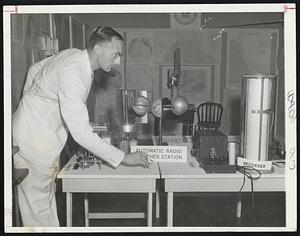
Since 1996, MBLC's LSTA-funded Environmental Monitoring (EM) program has helped more than 500 collection-stewarding institutions across the Commonwealth gain valuable environmental fitness information for their facilities. The agency's EM program also enables the longitudinal aggregation and review of environmental conditions in Massachusetts' libraries and cultural heritage institutions as they face numerous preservation challenges due to aging structures and the changing climate.
MBLC's current EM program supports twelve or more months of temperature, relative humidity, and light exposure monitoring at participating sites, with the following goals:
For the 2024-2027 EM program, MBLC will offer two environmental monitoring cycles: September 2024 to December 2025 and January 2026 to June 2027. Monitoring cycles include twelve or more months of active environmental monitoring for participating sites, with additional time included for site set-up, coordinator orientation, and equipment return. MBLC will support a cohort of up to 25 monitoring sites for each cycle. MBLC continues to partner with Conserv to provide participating sites with equipment kits, online analysis software, educational resources and training sessions.
MBLC's Conserv sensor kits, sized to support data-gathering in small, medium, or large spaces/facilities, will be delivered and returned by mail or the statewide Optima courier service. Conserv’s Conserv Cloud platform is freely available to site administrators and users for data recording and analysis, managing text and email alerts, and reporting activities.
MBLC staff can access each site’s Conserv Cloud account to assist with setup and review. MBLC may also collect anonymized monitoring data to support reporting on environmental conditions in libraries and cultural heritage facilities across Massachusetts. Conserv will provide MBLC-sponsored sites with virtual training sessions, support services, and access to Conserv's online community portal.
Site coordinator(s) are guided by a program participation agreement outlining their site's responsibilities. Coordinators receive, place, and facilitate the return of monitoring equipment. They are also responsible for maintaining current contact information, updating sensor labels, configuring reports, and setting up alerts in their site's Conserv Cloud account. Coordinators complete Conserv's online orientation module, participate in virtual training and information sessions, and connect with other program participants and preservation professionals in Conserv’s online community and MBLC’s communication channels.
